News & Announcements
- Details
- Written by Joshua Wachtel
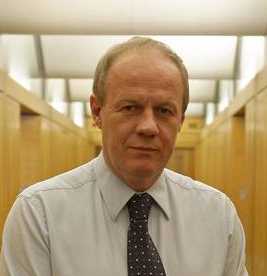 UK Justice Minister Damian GreenAccording to a number of reports in the UK, including this one from the Belfast Telegraph:
UK Justice Minister Damian GreenAccording to a number of reports in the UK, including this one from the Belfast Telegraph:
At least £29 million will be made available over the next three years for restorative justice - the process of bringing those whose lives have been ruined by crime or conflict together with those responsible for the harm.
A recent study by the Ministry of Justice (MoJ) linked the conferencing process with a 14% cut in re-offending, while 85% of victims who took part said they were satisfied with the experience.
- Details
- Written by Joshua Wachtel
 Ted Wachtel and Nicola Preston will co-teach the IIRP's new fully online "gateway" course, "Restorative Practices: The Promise and the Challenge"“Restorative Practices: The Promise and the Challenge,” a new graduate course from the International Institute for Restorative Practices, will be offered for the first time during the Spring 2014 term. This elective course (RP 506) is the first IIRP offering that will be completely online with no pre-requisites.
Ted Wachtel and Nicola Preston will co-teach the IIRP's new fully online "gateway" course, "Restorative Practices: The Promise and the Challenge"“Restorative Practices: The Promise and the Challenge,” a new graduate course from the International Institute for Restorative Practices, will be offered for the first time during the Spring 2014 term. This elective course (RP 506) is the first IIRP offering that will be completely online with no pre-requisites.
IIRP Founder and President Ted Wachtel, who will co-teach the class, said, “I’m excited about the opportunity to produce a really fun, interactive course that engages people in thinking and talking about restorative practices from anywhere in the world. For all of our other beginning courses people have to attend something. There are so many people that have contacted us that want to take a course but aren’t in a position to travel."
- Details
- Written by Joshua Wachtel
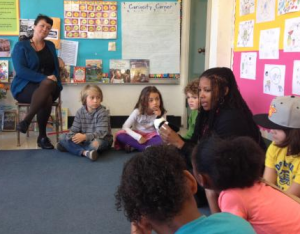 Photo by Jen ChienJan Chien, of San Francisco local public radio KALW, reports on restorative practices at Harvey Milk Elementary School:
Photo by Jen ChienJan Chien, of San Francisco local public radio KALW, reports on restorative practices at Harvey Milk Elementary School:
In addition to the whole-school circle in the morning, each class has its own daily community circle. Every classroom has a carpeted area where students and teachers sit on the floor to share their thoughts or feelings. In Marisa Martinez’s 3rd grade class, students pass a small stuffed panda around the circle, to mark who has the floor. Today they’re talking about people or animals that have passed on.
- Details
- Written by Joshua Wachtel
This video includes the entire plenary session from day three of the IIRP’s 16th World Conference on the topic of restorative practices in faith communities. Bruce Schenk, director of IIRP Canada, moderated the panel. The panelists included:
- Details
- Written by Joshua Wachtel
Anne Martin, director of restorative practices for Shalem Mental Health Network in Ontario, Canada, recently reviewed Margaret Murray's new mystery, Forging Justice.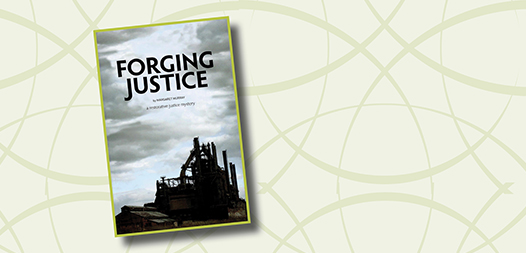
Police Detective Claire Cassidy, the protagonist of Margaret Murray’s recently published novel Forging Justice: A Restorative Justice Mystery, is ready to quit her job. When it appears that Pee Wee Lebovitch has reoffended, this time killing an elderly woman, and three teenage girls have brutally attacked a storeowner leaving him in a coma, Claire has had it. She feels she cannot help keep the city safe. Her twelve years on the police force in Bethlehem, Pennsylvania feel like a waste of time. Is it time to turn in her badge?
While investigating the attack on the storeowner, Claire meets Democracy High School’s vice-principal Daniel Pierce. “Adolescence is a special kind of hell,” Claire thinks as she drives up to the school. “And high schools are surely one of its torture chambers.”
- Details
- Written by Joshua Wachtel
 The International Institute for Restorative Practices has been invited to present plenaries and breakout sessions at a series of summits across New York State to share how restorative practices can be used in schools to help end the school-to-prison pipeline and transform disciplinary policies that disproportionately impact minority youth.
The International Institute for Restorative Practices has been invited to present plenaries and breakout sessions at a series of summits across New York State to share how restorative practices can be used in schools to help end the school-to-prison pipeline and transform disciplinary policies that disproportionately impact minority youth.
The New York State Permanent Judicial Commission on Justice for Children, chaired by Former Chief Judge Judith S. Kaye, has been working on issues regarding exclusionary school discipline and its connection to the justice system for the last few years. With funding from The Atlantic Philanthropies, the commission is currently hosting a series of regional summits from October, 2013 through April 2014.
- Details
- Written by Joshua Wachtel
This video includes the entire plenary session from day two of the IIRP’s 16th World Conference on the topic of restorative practices in schools. Dr. John Bailie, IIRP assistant professor and director of continuing education, moderated the panel. The panelists have all overseen restorative practices whole-school change in their respective schools and districts. In order of presentation, they are:
- Details
- Written by Joshua Wachtel
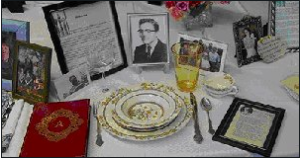 A piece shown during the "Saving a Place at the Table" art exhibit, from Brattleboro Community Justice Center's web siteBrattleboro Community Justice Center (Vermont, USA) presented two exhibits at the city's monthly art gallery walk to commemorate its 10th anniversary and to recognize restorative justice week, which is celebrated from November 17 to 24 in Canada and other places.
A piece shown during the "Saving a Place at the Table" art exhibit, from Brattleboro Community Justice Center's web siteBrattleboro Community Justice Center (Vermont, USA) presented two exhibits at the city's monthly art gallery walk to commemorate its 10th anniversary and to recognize restorative justice week, which is celebrated from November 17 to 24 in Canada and other places.
Deborah Lee Luskin, for The Commons Online, explains the first exhibit this way:
“Saving a Place at the Table” serves to honor and remember Vermonters who have been victims of violent crime. The exhibit features table-place settings for those killed by criminal violence and those whose lives have been significantly changed by that violence.
- Details
- Written by Joshua Wachtel
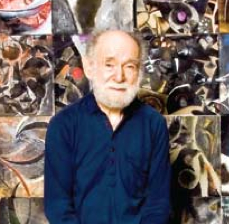 Artist Si Lewen, who donated his work to IIRP, surrounded by some of his paintingsArtist Si Lewen – who celebrates his 95th birthday today – donated his catalog of paintings and rights to his books to the IIRP to support the organization’s mission “to restore and build community in an increasingly disconnected world."
Artist Si Lewen, who donated his work to IIRP, surrounded by some of his paintingsArtist Si Lewen – who celebrates his 95th birthday today – donated his catalog of paintings and rights to his books to the IIRP to support the organization’s mission “to restore and build community in an increasingly disconnected world."
Last month renowned graphic novelist Art Spiegelman featured Lewen's The Parade in a special talk and performance given at Sydney (Australia) Opera House. The Parade: A Story in 55 Drawings, tells the saga of never-ending war as witnessed by Lewen, who watched the armistice parades after World War I morph into the death marches of World War II. Spiegelman is the author of many books including Maus, a two-volume portrayal of his father's experience during the Holocaust for which he was awarded a special Pulitzer prize.
- Details
- Written by Joshua Wachtel
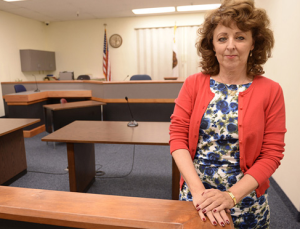 Julie Hilt, executive director of the Solano County Bar Association (Photo by Joel Rosenbaum for the Vacaville Reporter)The Solano County Bar Association (California), headed by Julie Hilt, executive director, is working to implement a restorative justice program for at-risk youth in the county, and also develop partnerships for building community with schools and others.
Julie Hilt, executive director of the Solano County Bar Association (Photo by Joel Rosenbaum for the Vacaville Reporter)The Solano County Bar Association (California), headed by Julie Hilt, executive director, is working to implement a restorative justice program for at-risk youth in the county, and also develop partnerships for building community with schools and others.
“We’re going to start with kids in diversion from the courts,” said Hilt. Later she hopes to apply for grants so the program can be developed to include adults in the criminal justice system and the jails.
The process of starting the program has involved building relationships and support with all the stakeholders one person at a time.

Restorative Works Year in Review 2024 (PDF)
All our donors are acknowledged annually in Restorative Works.
